| |
The three-basin fountain
is the landmark of the Maulbronn Monastery and a UNESCO
World Heritage site.
Picture: Landesmedienzentrum Baden-Württemberg
|
| |
 |
| |
Since February 2013, the three-basin fountain in the Maulbronn
Monastery decorates the new two-euro coin.
Picture: muenzblog.de
|
| |
 |
| |
The sandstone basins
of the famous fountain have been sealed with epasit special
building materials and know-how.
Picture: Silke Günther.
|
| |
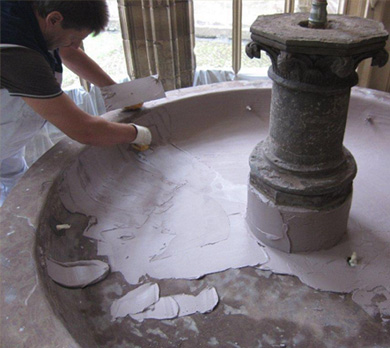 |
| |
The moulding time
between the application of
the first and the second layer should not exceed 48 hours.
Picture: Silke Günther.
|
| |
 |
| |
The sandstone basins
have been re-coated with a
sealing material in the aquiferous area. Picture:
Silke Günther.
|
| |
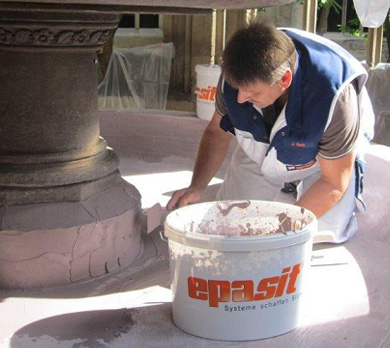 |
| |
The drinking water coating "MineralDicht"
has been dyed in the matching colour with inorganic pigments.
Picture: epasit.
|
| |
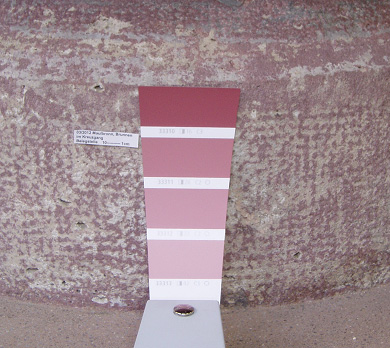 |
|
|
Landmark
of Maulbronn Monastery sealed

The three-basin fountain is the landmark
of the Maulbronn Monastery and a UNESCO World Heritage site. Since
February 2013, the monastery and its famous fountain is en route
in the whole of Europe -
as the motive of the newly striked two-euro coin. In 2012, the fountain
was repaired within the scope of
the rehabilitation work on the monastery complex.
Its sandstone basins have been sealed with epasit special building
materials and know-how.
Monastery: impressive contemporary witness

Since February 2013, a motive from Baden-Württemberg
decorates for the first time a two-euro coin: The Maulbronn Monastery
and its landmark, the three-basin fountain. The fountain, above
which a Gothic polygon is built, was constructed in 1878. At present,
a spring in the northeast of the monastery feeds the fountains in
the monastery complex.
The Maulbronn Monastery is the best-preserved medieval monastery
complex in the north of the Alps . In the Middle Ages it was an
important commercial centre with political and social influence.
After the Reformation in the 16th century, the monastery was converted
into a Protestant boarding school. Presently, there exists the Evangelical
theological seminary founded in 1807. The monastery complex combines
all architectural styles and stages of development from Romanesque
to late Gothic. This is one of the reasons why the monastery is
registered as a World Heritage site on the UNESCO list for the past
twenty years.
Starting position: the
three-basin fountain

The upper basin of metal has been rehabilitated externally. The
middle and lower basins are made of red sandstone. Openings in the
shape of lion's heads let the water flow from the middle into the
lower basin. Both sandstone basins should be re-coated with a sealing
material in the aquiferous area. With regards to the sealing of
the sandstone basins, the responsible architect, Holger Probst (Vermögen
und Bau Baden-Württemberg), and the graduated restorer Silke
Günther from Karlsruhe worked together with a team of epasit
consisting of Dr. Helmut Kollmann, Jürgen Kurz and Jürgen
Maruszyk.
Coating of the sandstone basins

The drinking water coating 'MineralDicht' has
been dyed in the matching colour with inorganic pigments. The alkaline
material permanently prevents the formation of algae and is extremely
weatherproof. First of all, the copper coatings of the drain holes
in the small basin were coated with epoxy resin from epasit. Mrs.
Günther and Mr. Kurz carried out the proper coating with two
layers. They applied the sealing slurry with
a thickness of approx. 2 mm by using a special steel trowel. The
restorer Silke Günther said, 'A fact that I like is that the
compound of the pure mineral material is clearly defined and not
modified with unnecessary additives. In addition, the pliable mortar
mass can be processed in a pleasant way.
The moulding time between the application of the first and
the second layer should not exceed 48 hours, otherwise the layers
will not combine with each other.
Presscontact:
epasit GmbH Spezialbaustoffe
Peggy Wandel
Sandweg 12 - 14, D-72119 Ammerbuch-Altingen,
Tel +49 (0) 7032 2015-0, Fax +49 (0) 7032 2015-21
e-Mail: presse@epasit.de
|
|
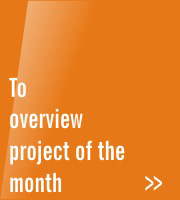
FURTHER OBJECTS:

Gymnasium zu Bratislava

Burg zu Bratislava

Trinkwasserbehälter
Lindau

Altes Rathaus
Bonn

Stadtgymnasium
Helsinki
 Jugendstilvilla
in Aalen
Jugendstilvilla
in Aalen
 Waldseer
Hof Markdorf
Waldseer
Hof Markdorf
 Therme
Rügen
Therme
Rügen

Schimmelalarm im
Badezimmer

Diakonie-Gebäude
Witten

Leonhardskirche English
>>

Deutscher Kaiser
English
>>

Wilhelma Stuttgart English
>>

Trinkwasserbehälter English
>>

Hafenviertel Tallinn English
>>

EZB Frankfurt English
>>

Zwinger Dresden English
>>

TU-Krakau English
>>

Brunnen Maulbronn English
>>

Jurahaus English
>>

Contact
us

Do you have questions and need
a personal contact?
Fon +49 (0)7032
- 20 15-0
Project management

Jürgen Maruszyk
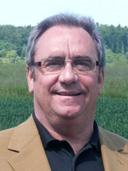
If you have further questions regarding this object or a similar
problem, please contact us.
Contact us

e-Mail:
juergen.maruszyk@epasit.de
Phone
+49(0)7033 -34010
|